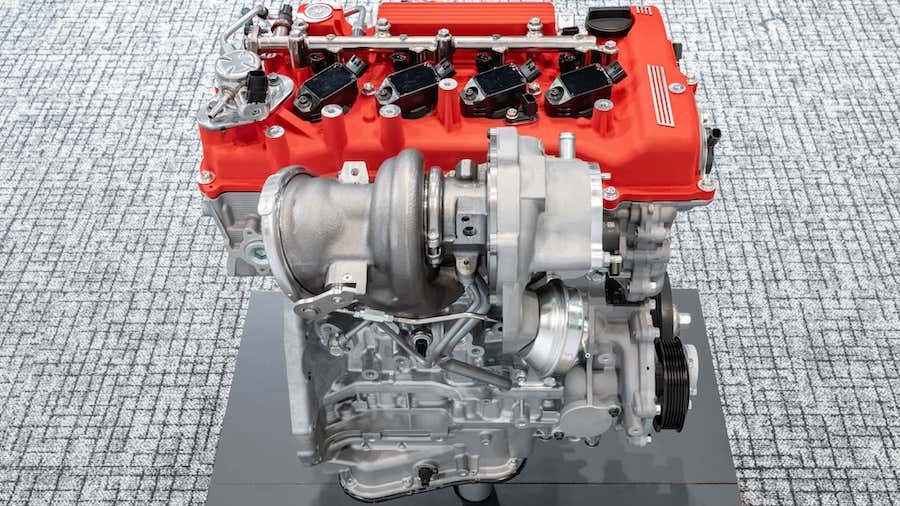Toyota Claims Its New Combustion Engines Are a Game-Changer

While some automakers hype up EVs that won't come out for another several years, Toyota does the same with combustion engines. Well ahead of their introduction in production cars, the new four-cylinder ICEs were unveiled as work-in-progress developments at the end of May. Now, the Japanese automaker’s Chief Technology Officer is providing more details about what lies ahead.
Speaking with Automotive News, Hiroki Nakajima referred to the new 1.5- and 2.0-liter engines as a potentially "game-changer solution." He went as far to say they'll be "completely different" compared to the current crop of ICEs. While hydrogen cars haven't really taken off, Toyota says the development work done for the slow-selling Mirai has helped the engineers learn more about engine heat efficiency.
Nakajima didn't go into specifics about thermal efficiency but Toyota hit 40 percent several years ago. Nissan touts an even higher 50 percent thanks to its e-Power technology with the combustion engine serving as a generator to feed a battery instead of driving the wheels. Another Japanese automaker, Mazda, has taken a similar approach with the rotary engine inside the MX-30, a range-extending electric crossover.
Toyota's CTO mentioned the new engines are going to have a shorter piston stroke, which was "a very difficult task" to accomplish. These inline-fours are all going to be smaller to "revolutionize vehicle packaging," enabling lower front ends for better efficiency by optimizing airflow. The torque lost in the process will be compensated by the instant response of an electric motor. These new engines are being developed primarily with hybrids in mind.
As to when the first cars will hit the streets with the new engines, expect to see them around 2027. Toyota is developing the powertrains to run not just on fossil fuels, but also on biofuel, hydrogen, and even synthetic fuel. Nakajima claims this new engine family "has lots of room to play," suggesting there are plenty of engineering tricks the company won't divulge for now.
Nissan has a completely different strategy since it recently announced it has stopped spending money on ICE development. It’s going all-in on EVs, with range-extending gas engines to serve as the stopgap.
Related News


